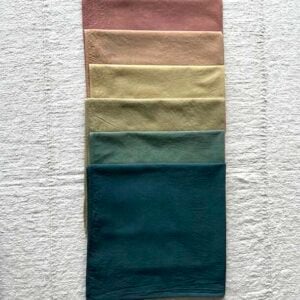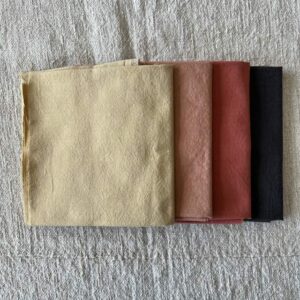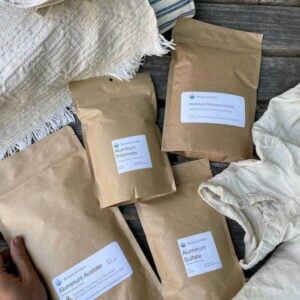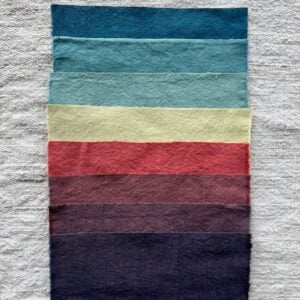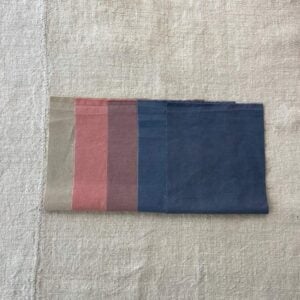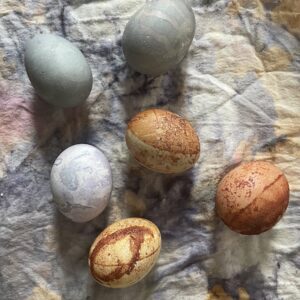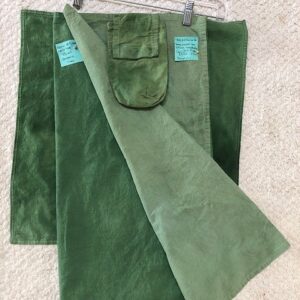Mordant Monday: Myrobalan Magic
This week’s tannin exploration focuses on Myrobalan. I changed it up a bit this week by using our mordanted cotton bandana 6-pack as the base for exploring myrobalan. The convenience was a pleasant surprise and the colors came out beautiful. Myrobalan is a traditional cellulose tannin pre-treatment and dye, and used in Ayurvedic and traditional medicine. It’s an important color and used frequently in India and Southeast Asia. Myrobalan imparts a light yellow on cotton with a subtle light brown undertone, making it an ideal foundation for color overdyeing, and indigo combinations. Like our other examples, when combined with other … Read more

